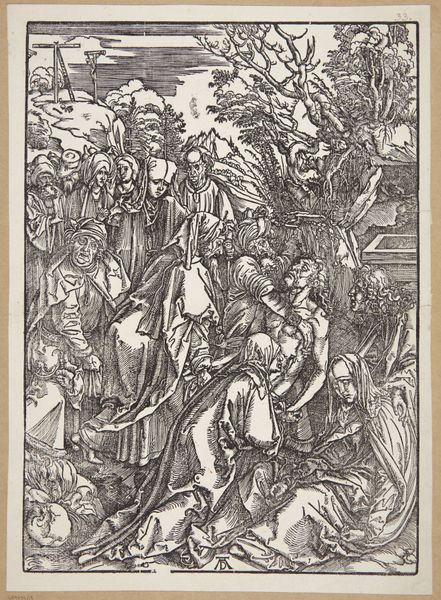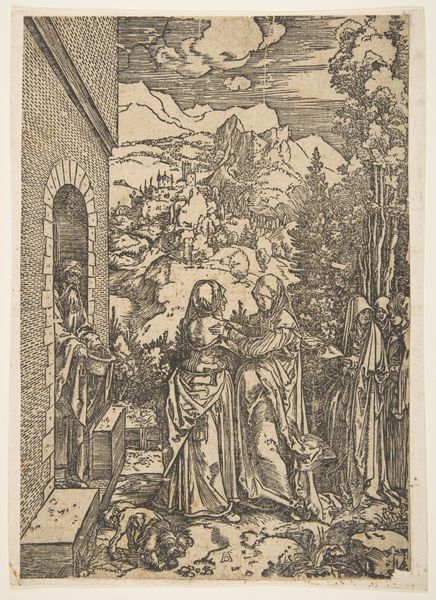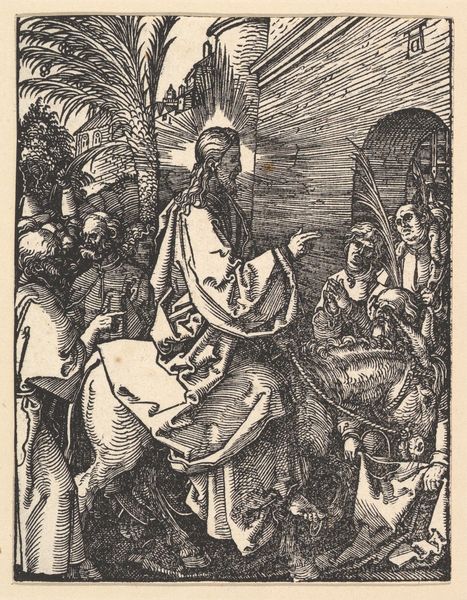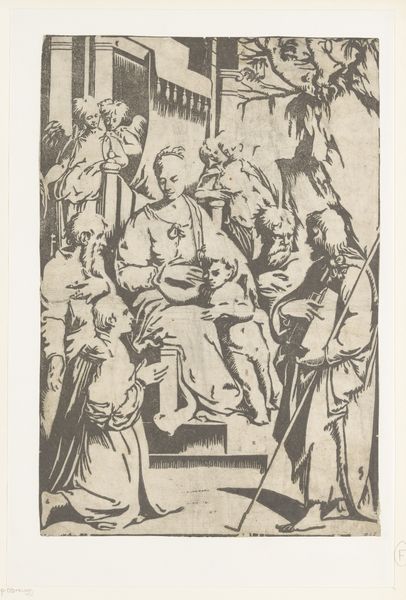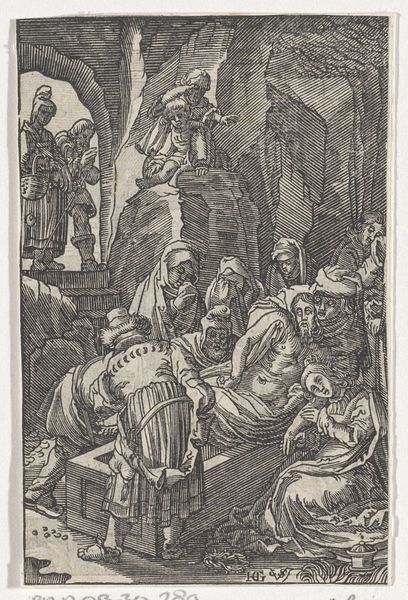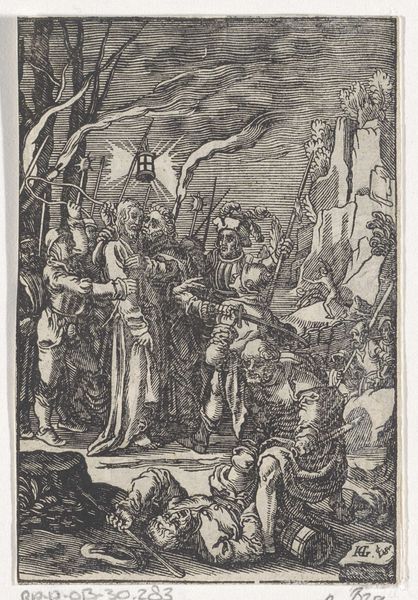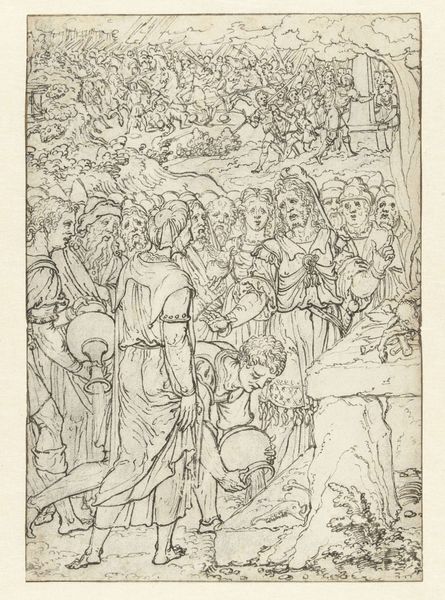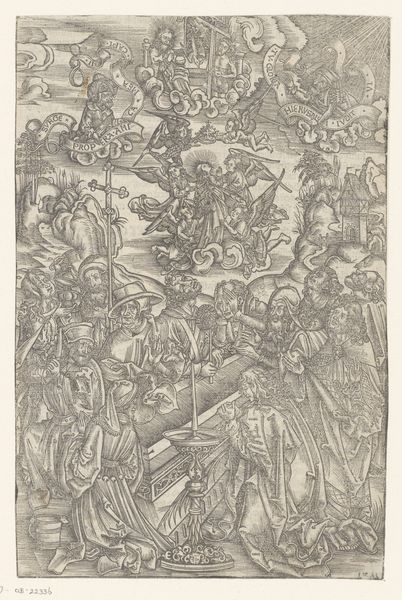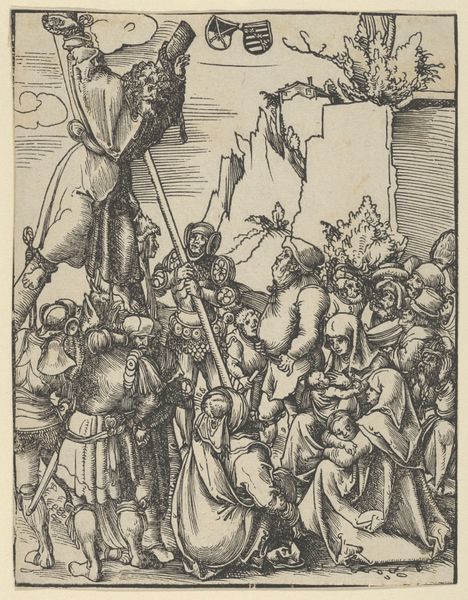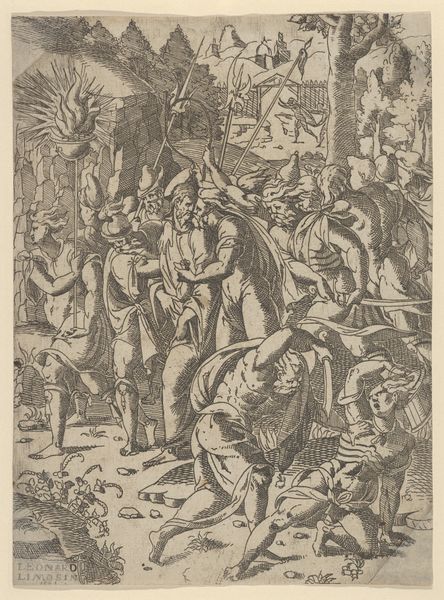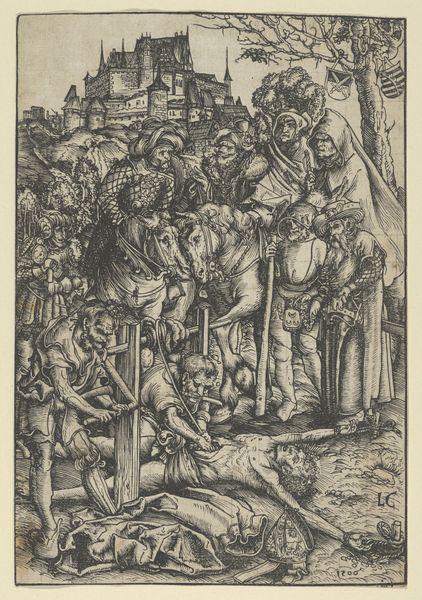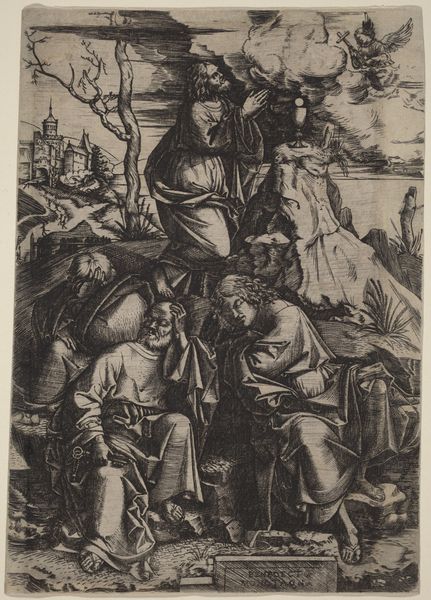
Christ's Entry into Jerusalem, from The Small Passion (copy) 1485 - 1600
0:00
0:00
drawing, print, ink, woodcut
#
drawing
#
ink drawing
#
medieval
#
narrative-art
#
pen drawing
# print
#
pen sketch
#
figuration
#
ink
#
woodcut
#
northern-renaissance
#
christ
Dimensions: sheet: 8 1/4 x 5 3/4 in. (21 x 14.6 cm)
Copyright: Public Domain
Editor: So, this is a copy of Albrecht Dürer’s "Christ's Entry into Jerusalem, from The Small Passion," dating somewhere between 1485 and 1600. It’s an ink woodcut, currently held at The Met. What strikes me is how the relatively simple lines convey such a dense crowd scene. How do you interpret this work, focusing on the materiality and process? Curator: It's crucial to understand that this woodcut isn’t just an image, it's the product of significant labor. Consider the material constraints of wood and the skill needed to carve such detail. This wasn’t merely about artistic expression, but also about the production and distribution of religious imagery for a wider audience. Note the contrast between areas of intricate detail, requiring more labor and skill, and more schematic representation, accelerating the means of production for wider distribution. How do these observations change how we see it? Editor: That’s a great point! I was so focused on the figures themselves. But now I see how the *making* of the piece is almost as important as the religious subject matter. Does the fact that this is a copy influence your view of its material and production value? Curator: Absolutely. The act of copying further complicates the relationship to labor. While still requiring skill, the copyist engages in a different kind of work. They're re-producing and re-circulating imagery, raising questions about authenticity, value, and consumption. Consider also the economic motivations. Religious imagery such as these fueled print markets, a means to connect and participate. Editor: So, it's not just a religious image, but also a commodity tied to specific labor practices and markets. I see now. It’s incredible how this medium transforms a single artistic act into a form of mass production, fundamentally altering the way religious ideas could be accessed and disseminated. Curator: Precisely. Thinking about this artwork through a material lens allows us to unpack the complex relationship between art, labor, and society in the Northern Renaissance. The simple print becomes a window onto a vast network of making and exchange.
Comments
No comments
Be the first to comment and join the conversation on the ultimate creative platform.
